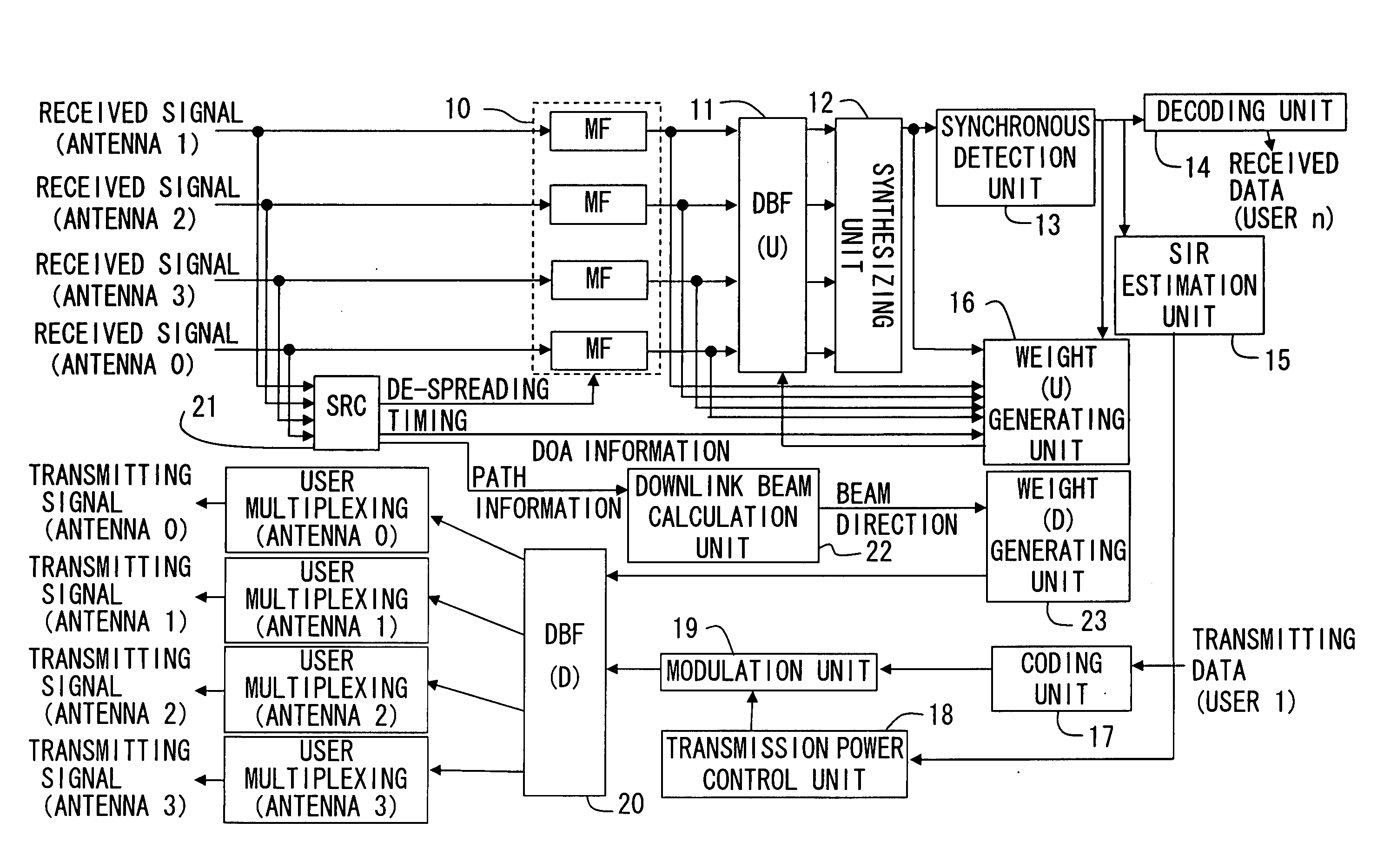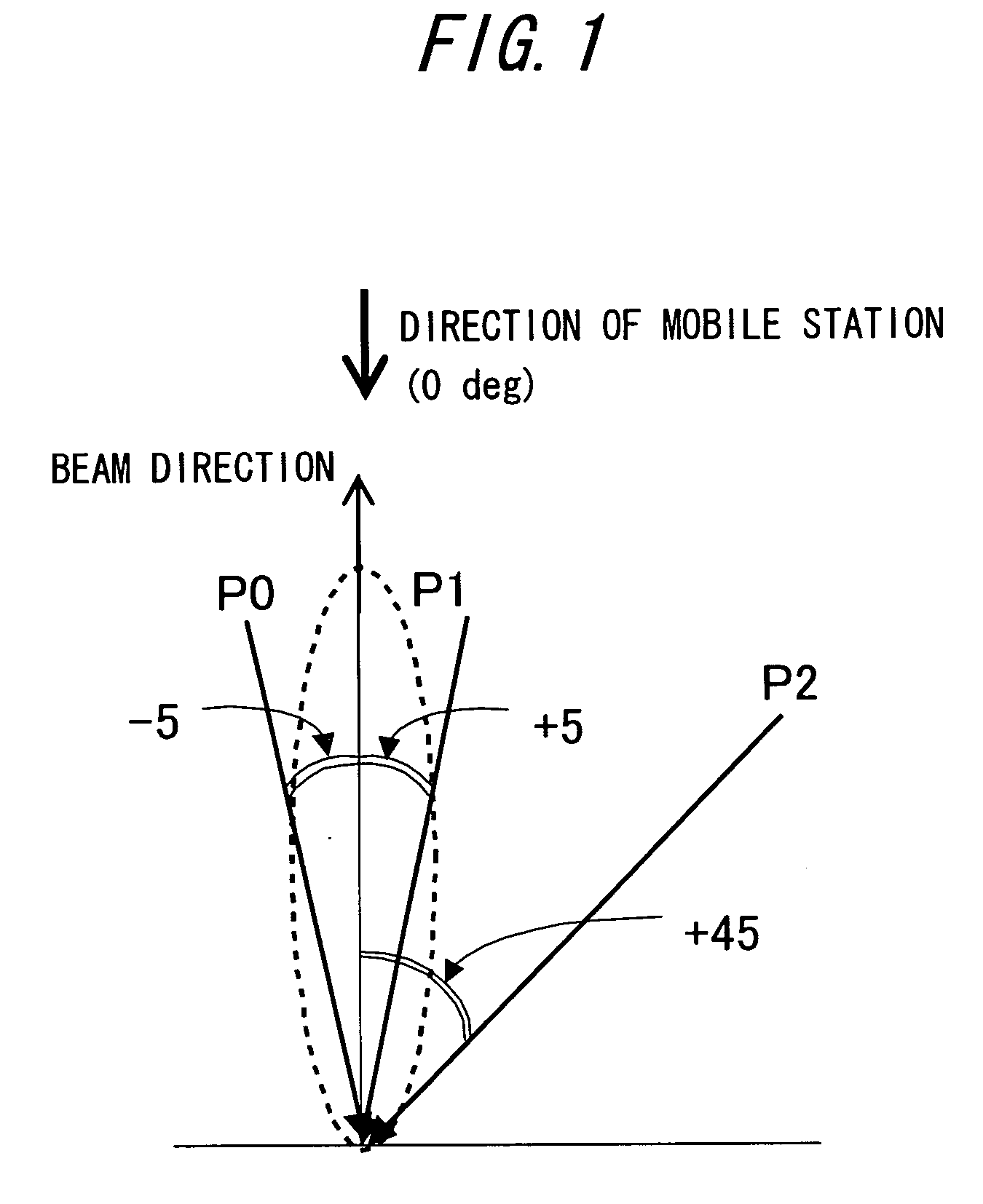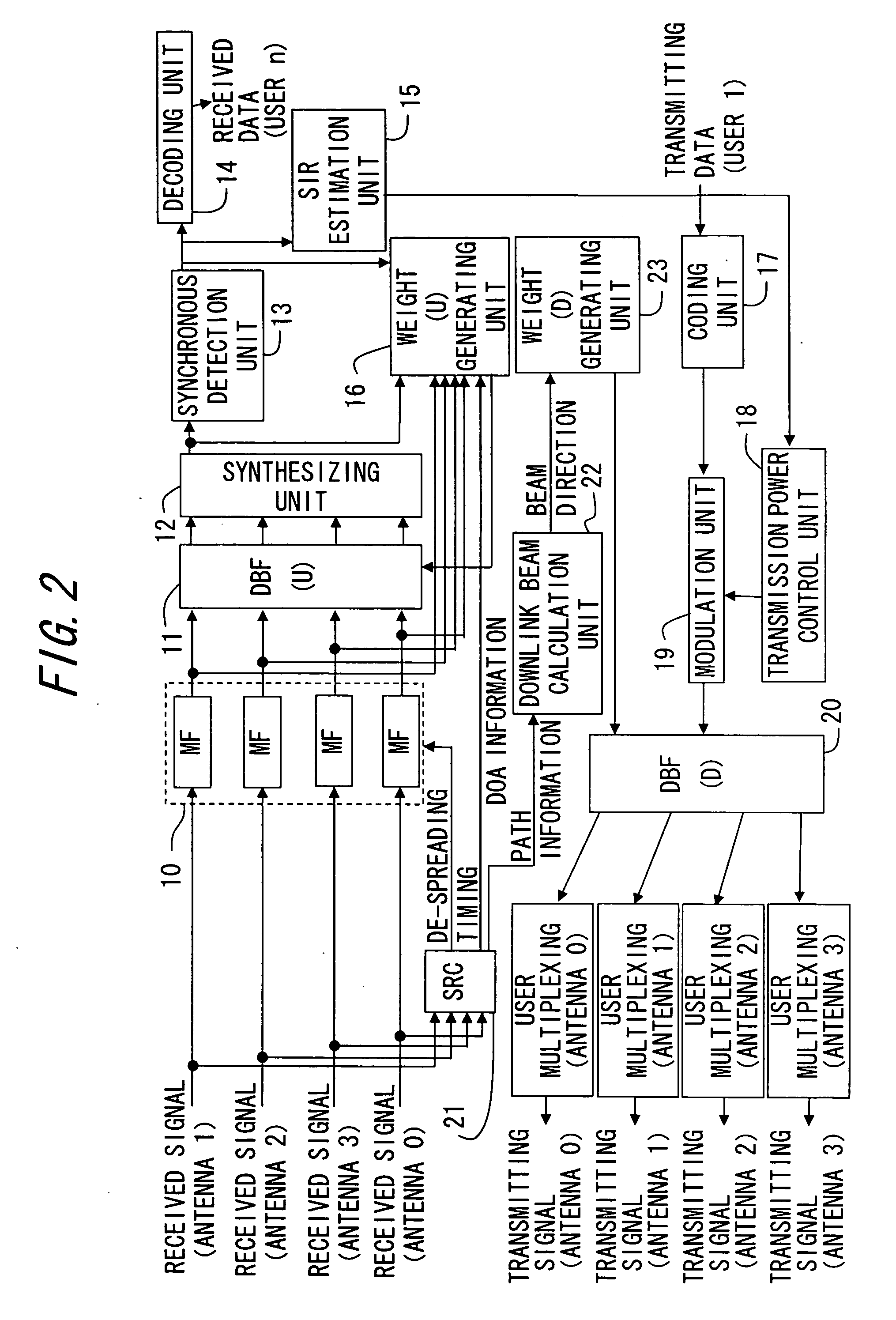Wireless communication device and method
a communication device and wireless technology, applied in the direction of wireless communication, transmission monitoring, polarisation/directional diversity, etc., can solve the problems of speech quality deterioration, interference noise to other mobile stations, and deviation of the direction obtained, so as to improve the communication quality
- Summary
- Abstract
- Description
- Claims
- Application Information
AI Technical Summary
Benefits of technology
Problems solved by technology
Method used
Image
Examples
first embodiment
[0067] To start with, the wireless communication system in a first embodiment of the present invention will hereinafter be explained.
[0068] [System Architecture]
[0069] A system architecture of the wireless communication system (which will hereafter be simply referred to as this system) in the first embodiment, will be described with reference to FIGS. 2, 3 and 4. FIG. 2 is a block diagram showing the system architecture of the wireless communication system in the first embodiment. FIG. 3 is a block diagram showing a functional configuration of a downlink beam calculation unit in the first embodiment. FIG. 4 is a diagram showing a delay profile in the first embodiment.
[0070] This system includes a CPU (Central Processing Unit), a memory, an input / output interface, etc., and this CPU executes a control program etc. stored on the memory, thereby controlling respective function units given below. Further, the individual function units shown below may be set to operate by hardware logi...
second embodiment
[0109] The wireless communication system in a second embodiment of the present invention will hereinafter be described. The wireless communication system in the first embodiment explained earlier is that the beam coefficient k(i) is calculated by use of the delay information from the fast path, and the downlink beam direction is calculated by employing the beam coefficient k(i), the received signal power information P(i) and the arrival angle information θ(i) of each path. The wireless communication system in the second embodiment is that the beam coefficient k(i) is calculated by use of the delay information from the path having the maximum received signal power level (which will hereinafter be termed the maximum path) among the plurality of paths.
[0110] [System Architecture]
[0111] The wireless communication system in the second embodiment is configured by the same function units as those in the first embodiment (see FIG. 2). The downlink beam calculation unit 22, however, operate...
third embodiment
[0129] The following is a description of the wireless communication system in a third embodiment of the present invention. In the wireless communication system in the first embodiment discussed earlier, the downlink beam direction is calculated by use of the delay information from the fast path. The wireless communication system in the third embodiment is that the beam coefficient k(i) is calculated by using the delay information from a start timing for a path search in each path.
[0130] [System Architecture]
[0131] The wireless communication system in the third embodiment is configured by the same function units as those in the first embodiment (see FIG. 2). The downlink beam calculation unit 22, however, operates differently from in the first embodiment and is therefore explained as below. The explanations of the same other function units as those in the first embodiment are omitted. FIG. 7 is a block diagram showing a functional configuration of the downlink beam calculation unit ...
PUM
 Login to View More
Login to View More Abstract
Description
Claims
Application Information
 Login to View More
Login to View More - R&D
- Intellectual Property
- Life Sciences
- Materials
- Tech Scout
- Unparalleled Data Quality
- Higher Quality Content
- 60% Fewer Hallucinations
Browse by: Latest US Patents, China's latest patents, Technical Efficacy Thesaurus, Application Domain, Technology Topic, Popular Technical Reports.
© 2025 PatSnap. All rights reserved.Legal|Privacy policy|Modern Slavery Act Transparency Statement|Sitemap|About US| Contact US: help@patsnap.com



